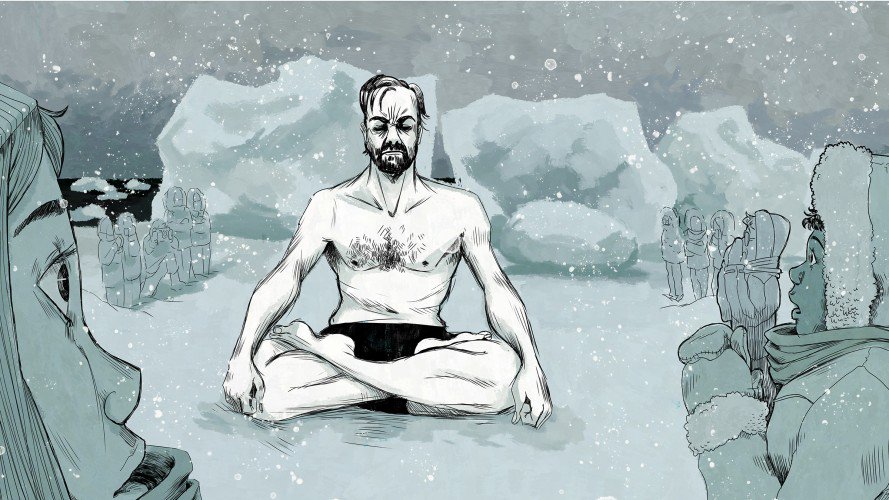
The Science Behind Miracles
for OutsideImagine a man who could endure near-freezing water for 45 minutes at a stretch. Imagine if that same man could run a barefoot marathon in the Arctic or swim 50 meters under the ice of a frozen lake. Imagine that man said the secret to his abilities not only allows him to climb Himalayan mountains wearing shorts, but also eases everything from chronic pain to Crohn’s disease and even Parkinson’s. What would you call that man? A savant? Guru? Prophet of God, maybe?
That’s the character Scott Carney describes in his new book, What Doesn’t Kill Us, about legendary survivalist and icy-water swimmer Wim Hof. The 57-year-old Dutchman, often referred to as the Iceman, has devised a series of breathing techniques and conditioning exercises—mostly various types of hyperventilation and other ways to purge the body of CO2—that he credits as being the key to his extraordinary abilities. Hof, for his part, sees the whole thing in a much more spiritual light—getting back to a purer, more primitive version of ourselves.
The book is a fun read because, at first glance, Hof does seem superhuman. He claims that by slowly conditioning oneself to low-oxygen states (through breathing exercises) or extreme cold (through full-body muscle-clenching exercises), one can channel their spiritual energy and tap into all kinds of hidden powers. Carney is at his best when he tries to explain Hof’s abilities through science. For instance, he suggests that Hof has tapped into a specific type of fat cell called brown adipose tissue that is found in human babies but mostly disappears in adulthood; through his body training, it’s possible that Hof has encouraged this vestigial fat to play an increased role in trapping heat. But the tone of What Doesn’t Kill Us occasionally implies that we should worship the guy. And honestly, it’s hard not to.
(For the full story, click here)